AMD A10-7800 Review: Testing the A10 65W Kaveri
by Ian Cutress on July 31, 2014 8:00 AM ESTGaming and Synthetics on Processor Graphics
The faster processor graphics become, the more of the low end graphics market is consumed - if the integrated graphics are better than a $50 discrete GPU, there ends up being no reason to buy a discrete GPU. This might seem a little odd for AMD, who also have a discrete GPU business. The counter argument is that integrated graphics is only comparable to low-end GPUs, which are historically low margin parts and thus might encourage users to invest in larger GPUs, especially as demands in resolution and graphical eye-candy increase. The compute side is also important, and the homologation of discrete to integrated graphics architectures helps software optimised for one also be accelerated on the other.
F1 2013
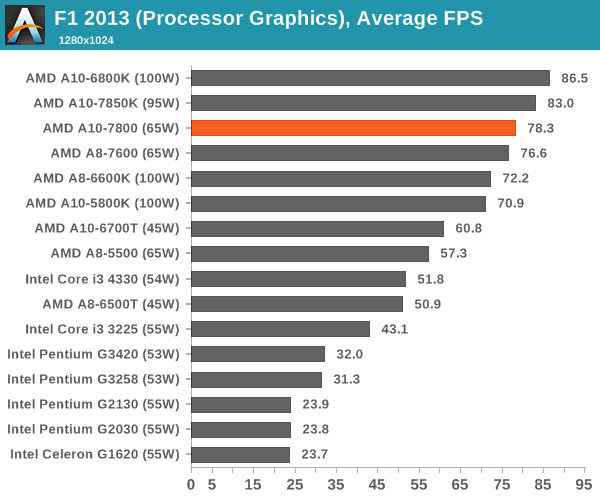
Bioshock Infinite
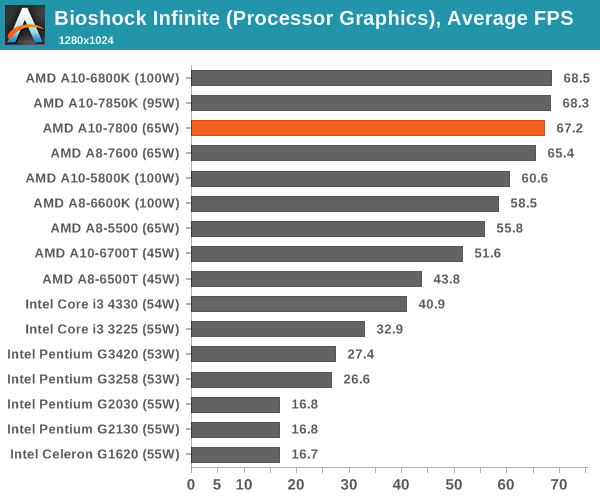
Tomb Raider
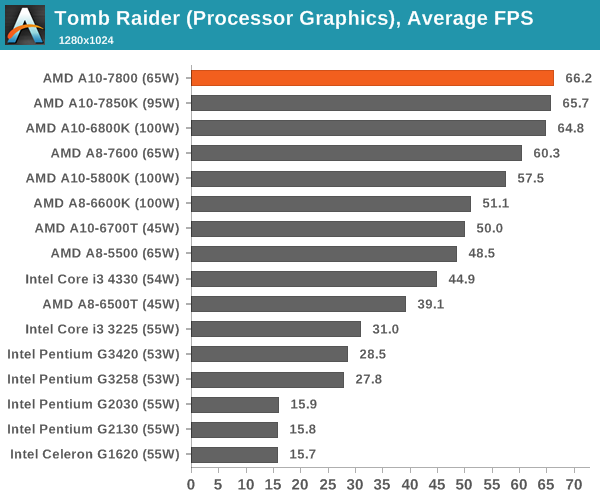
Sleeping Dogs
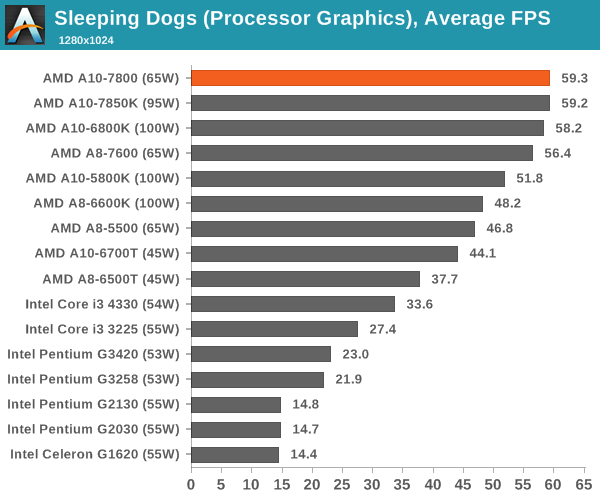
Company of Heroes 2

CompuBench 1.5
CompuBench is a new addition to our CPU benchmark suite, and as such we have only tested it on the following processors. The software uses OpenCL commands to process parallel information for a range of tests, and we use the flow management and particle simulation benchmarks here.
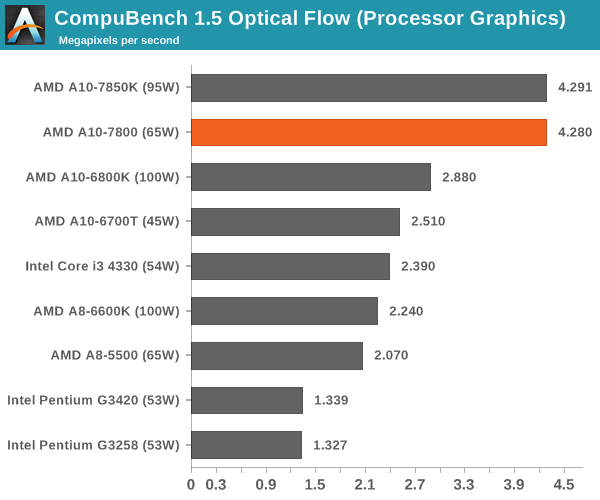
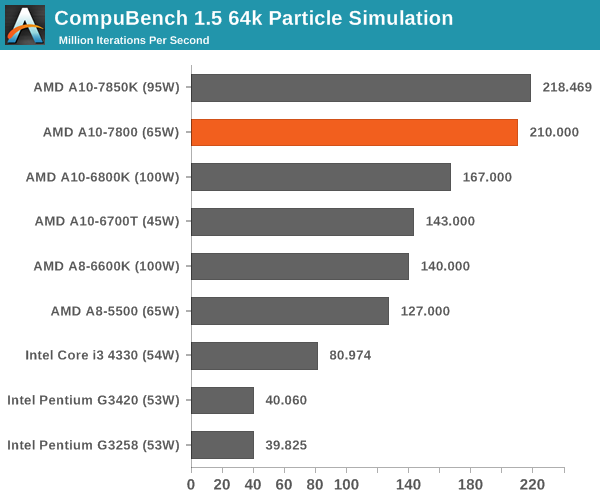
3DMark Fire Strike
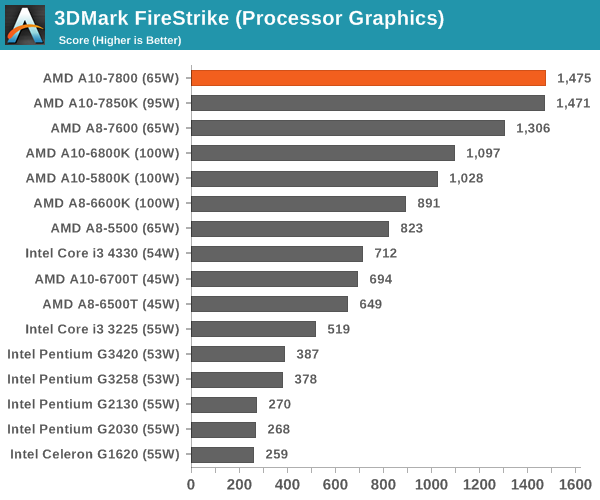
The simple answer is this: for anything related to processor graphics, AMD's Kaveri wins hands down and by a large margin in the same power envelope for cheaper.






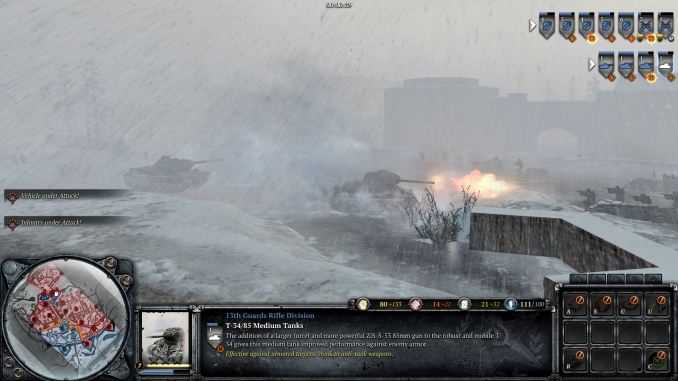








147 Comments
View All Comments
DigitalFreak - Thursday, July 31, 2014 - link
I'll take Conspiracy Theories for $100, Alex.Essence_of_War - Thursday, July 31, 2014 - link
Really?Here's the big haswell review:
http://www.anandtech.com/print/7003/the-haswell-re...
Here's the first Kaveri review:
http://www.anandtech.com/print/7677/amd-kaveri-rev...
Here's the Devil's Canyon review:
http://www.anandtech.com/print/8227/devils-canyon-...
There were platform power benches in all of them. Haswell-big has idle/load for a smattering of i5's/i7's, Devil's Canyon had an OC overview of system power consumption. Same with Kaveri.
DanNeely - Thursday, July 31, 2014 - link
Could you add a few low/mid end discrete GPUs that fall into the same performance bucket as Kaveri's IGP for comparison purposes?jaydee - Thursday, July 31, 2014 - link
The A10-7800 65W looks like a winner in it's market (budget gaming). Unfortunately, that's not a very large market, and if you're looking to upgrade the CPU down the road, you are quite limited.On a side note, it seems odd that 1280x1024 was chosen as the resolution for the gaming benchmarks. It's been probably a decade since the 5:4 aspect ratio monitors have been sold in the mainstream. 1440x900 or 1600x900 would make more sense, with similar total number of pixels.
Essence_of_War - Thursday, July 31, 2014 - link
This!I'd like to see a move to 1280x720 or 1600x900 for these sort of low-end graphics parts. Most living room TV's are 1920x1080, but depending on your set-up 1280x720 or 1600x900 might still look pretty good.
jabber - Thursday, July 31, 2014 - link
I would have thought 1366x768 should be the minimum benchmark size nowadays.All the others are quite custom and the average Joe won't be using them.
DanNeely - Thursday, July 31, 2014 - link
1600x900 is the current mid level gfx setting for mobile reviews; 1366x786 is the low end level. don't know why it couldn't be added to IGP benching too. The next time the IGP benchmark process is updated either of them would make more sense as a target. 1600x900 is closer in terms of pixel count; but 1366x768 is probably a more realistic option for most IGP gaming if only a single resolution is tested, since only the highest end IGPs can get FPSes high enough to play at anything higher.Essence_of_War - Thursday, July 31, 2014 - link
1280x720 is a standard resolution for TVs. For a light gaming HTPC type load, I think that's pretty reasonable to test.Guspaz - Thursday, July 31, 2014 - link
Umm, NewEgg has 146 different monitors with 1280x1024 resolution available. They're definitely still extremely mainstream, and there are only two resolutions that they have more selections for, 1920x1080 and 2560x1440.SparklesP - Thursday, July 31, 2014 - link
Still available if you're looking to buy an older budget monitor or are in the market for refurbished, but they are basically only being made to wholesale to cheap businesses these days.